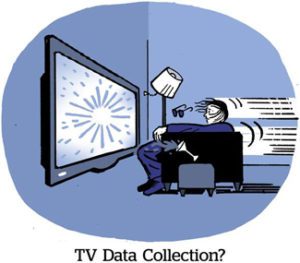If adoption for new TV measurement currencies seems slow, it’s probably because they still don’t fit neatly into existing agency buying workflows, which are used to Nielsen-based demos.
But that’s starting to change.
On Thursday, Paramount and Omnicom Media Group (OMG) unveiled a pilot test transacting on VideoAmp using the data activation platform Mediaocean to automate linear TV buys based on something other than traditional demos, said Travis Scoles, SVP of advanced advertising at Paramount.
It marks the first time Paramount can send Mediaocean campaign plans for insertion orders using VideoAmp’s advanced audience data, not just Nielsen numbers. Previously, adding data from an alternative currency into that mix took a lot of manual legwork (and spreadsheets).
“Automation is really the single biggest difference here” compared to OMG’s previous workflow using an alt currency for Paramount buys, said Kelly Metz, managing director of advanced TV activation at OMG.
Ultimately, “better automation is what will drive scale in adoption [for alt currencies],” she added.
Running water through the pipes
Alt currencies have to fit the way agencies are already buying TV campaigns, as per the how-to template Paramount put out in March.
For example, most holding companies currently do campaign planning, activation and reporting within Mediaocean, which had to figure out how to support non-Nielsen currencies without adding too many extra steps. And broadcasters are responsible for making sure their data can plug into Mediaocean’s tech stack.
Since Mediaocean’s data activation platform was built on top of Nielsen numbers, clients trying to transition to a different currency would have to go “outside of the system” to get measurement from the new currency and then hardcode that data manually, said Ramsey McGrory, the company’s chief development officer.
But it seemed the manual labor would finally end when Mediaocean finalized integrations with VideoAmp in Q2 of this year. Paramount and Mediaocean spent the months leading up to this pilot ensuring compatibility between what was sent and received based on VideoAmp data.
In other words, “this is the first time we’re actually running water through the pipes” between Paramount and Mediaocean where advanced audience data is concerned, Paramount’s Scoles said.
Mediaocean’s platform can also support iSpot and Comscore, but Paramount and OMG both agreed on VideoAmp as the alt currency for their pilot because of its advanced audience chops.
“Now, VideoAmp data automatically flows through Mediaocean directly into our billing systems on both a pre-campaign and post-campaign basis,” Metz said, “which means we can transact [on VideoAmp] at scale.”
Blast from the past
The pilot focuses on linear TV because it’s lagging behind streaming in its ability to support advanced audience buys.
But linear and streaming impressions are still counted differently.
While digital impressions are second by second, linear ad exposures are still based on C3 and C7 ratings that track average commercial minutes over three or seven days, respectively.
C3 and C7 are still an important step for agencies to apply advanced audiences to the way they’re accustomed to buying linear spots. “Now, we can transact on a custom audience in a fully automated fashion” using Mediaocean, Metz said.
OMG can match an advertiser client’s first-party data with Paramount’s and VideoAmp’s audience data within Mediaocean to create a custom audience segment of household IDs. Then, OMG can buy that audience on Paramount’s inventory using data-driven linear, which involves running ads on networks and dayparts most likely to resonate with a target audience.
For Paramount, the next steps are moving to exact, second-by-second buys for linear and opening up the capability to its other buy-side clients. But first, Scoles said, “we might still have to rough out some edges.”




















